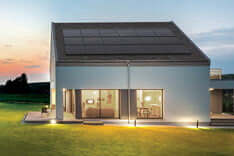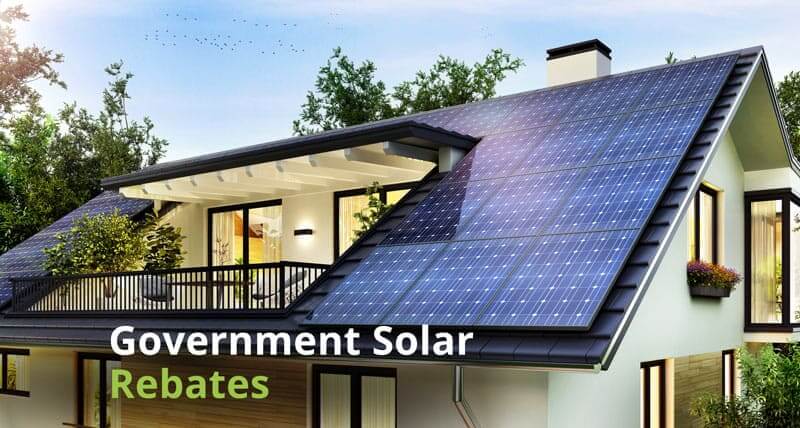Home When is The Best Time to Use Solar Electricity?
When is The Best Time to Use Solar Electricity?
Understanding the optimal times to harness solar power, coupled with tweaking the performance of your solar panel system, is essential for households aiming to reduce their electricity bills and lessen their environmental footprint.
Solar panels are most efficient when the sun hits them directly instead of at an angle as it rise and falls. That would be between 10:00 am and 2:00 pm each day.
The first step towards energy freedom is relying less on electricity imported from the grid and using clean and free solar energy.
Table of Contents
ToggleSolar output vs. time of day
The middle of the day, between 9 am and 3 pm, is the best time to use electricity generated from your solar panels because the sun is strongest then. This, of course, can vary depending on the orientation and tilt of your solar panels. Also, the area you live in and the time of the year is essential.
Factors that affect you solar
The “best time to use” your solar-generated electricity depends on
- your roof/solar orientation,
- the optimum range, and
- your electricity plan.
Roof/solar panel orientation
In Australia, north-facing solar panels usually provide the most energy output because Australia is in the southern hemisphere and experiences a sun that is mostly directed from the north.
- North-facing panels reach their peak from 9 am to 2 pm,
- West-facing panels reach their peak from 2 pm to 5 pm,
- East-facing panels reach their peak from 8 am to 11 am.
The optimum range
Pitch is also important. The optimum range is 20 to 30 degrees for optimum power generation, but you could go down to 10 degrees without losing much efficiency in energy production.
A minimum of 10 degrees is recommended so the panels are self-cleaning when leaves fall and when it rains.
The electricity plan
Having a plan for when and how you use your solar power throughout the day is very important.
This is the so-called “electricity load profile”, which is essential to maximize your savings. Your solar system will be most effective if the most solar electricity usage is during the hours when your solar panels are at their peak. Energy efficiency appliances will significantly affect the work of your solar system since they will reduce the energy demand.
Best months of the year to use solar?
The area you live in is essential here. Also, your proximity to the equator determines whether your solar panels will produce more or less electricity compared to seasonal changes.
However, solar panels will produce the most energy when the days are longer and the sun is available for longer. See the infographic below to see the best months of the year in your state.
Average energy output - seasonal shifts
The table below will show you the differences in the seasonal shifts in your state.
| State | Energy output (Autumn to Summer) | Energy output (Winter to Summer) | Energy output (Spring to Summer) |
|---|---|---|---|
| WA | 0.64 | 0.49 | 0.84 |
| VIC | 0.58 | 0.41 | 0.82 |
| TAS | 0.61 | 0.36 | 0.83 |
| SA | 0.66 | 0.44 | 0.84 |
| QLD | 0.81 | 0.75 | 1 |
| NT | 1.09 | 0.99 | 1.1 |
| NSW | 0.78 | 0.64 | 0.98 |
| ACT | 0.77 | 0.53 | 0.92 |
The results in the table show that the winter energy output for the WA is 0.49 which means that the average energy output in WA is 49% of the output in summer. Or, there is 51% less power generation in winter compared to summer.
Average daily sunshine hours in Australia
The table shows the average daily sunshine hours in various Australian cities.
| Perth | Adelaide | Melbourne | Canberra | Sydney | Brisbane | |
|---|---|---|---|---|---|---|
| January | 11 | 10 | 8 | 9 | 8 | 8 |
| February | 10 | 9 | 8 | 8 | 7 | 7 |
| March | 9 | 8 | 6 | 8 | 7 | 7 |
| April | 7 | 6 | 5 | 7 | 7 | 7 |
| May | 6 | 5 | 4 | 6 | 6 | 7 |
| June | 5 | 4 | 3 | 5 | 6 | 7 |
| July | 5 | 4 | 4 | 5 | 7 | 7 |
| August | 5 | 5 | 4 | 6 | 8 | 8 |
| September | 7 | 6 | 5 | 8 | 8 | 8 |
| October | 9 | 7 | 6 | 8 | 8 | 8 |
| November | 10 | 8 | 7 | 9 | 8 | 8 |
| December | 11 | 9 | 7 | 9 | 8 | 8 |
FAQs
Contrary to popular belief, solar panels don’t need the heat from the sun. They don’t have insulation and therefore lack protection from excess heat absorption.
This is usually detrimental to their functionality and that’s why they can work optimally during the cold season.
Indeed, solar panels work most efficiently during summer, but it’s not because of the extent of the heat during that season. It’s usually because the sun shines for longer, and brighter and hits your solar panels on the best angle for maximum absorption.
For example, if your solar PV system is in the shade most of the day, it will not generate as much solar power even on the hottest day.
Panels do not have to be pointed in just one static direction. A homeowner can buy a device called a tracker that will pivot the panels, like a sunflower, so they always face the sun!
A tracker can raise the output of a panel by 45 per cent. But installing trackers will cost thousands of dollars, and require detailed structural engineering, and council approval. For residential houses, trackers rarely make financial sense.
Changing the orientation of an existing solar panel is possible, however when the cost of having the array shifted is considered, it usually makes more financial sense to buy additional panels or battery storage.
Table of Contents
Toggle




